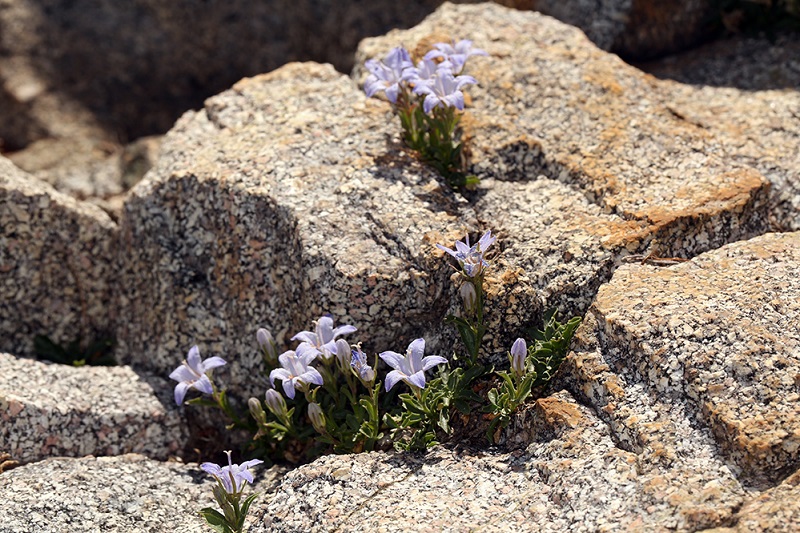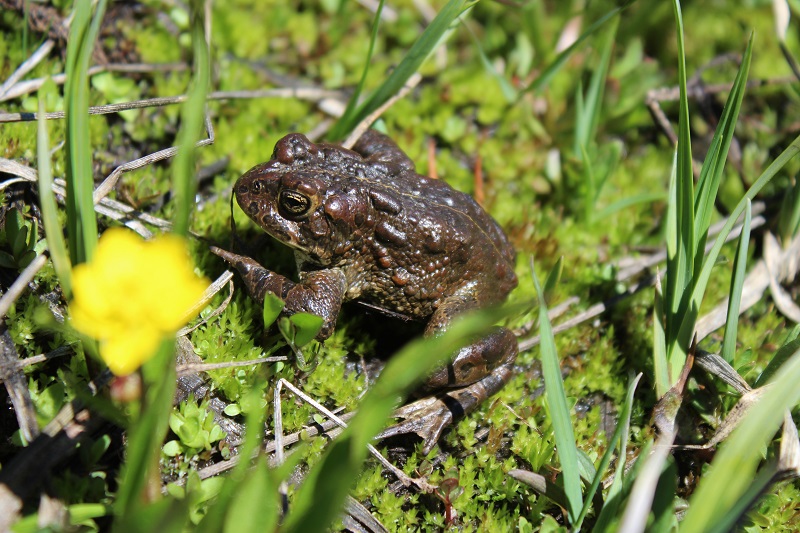
Campanula shetleri – Castle Crags harebell
Submitted by Steve Matson
This California endemic was found by Steve Matson in Siskiyou County. Campanula shetleri was originally listed in 1974 and was considered to occur in small numbers or in restricted populations. It is currently ranked as 1B.3 (rare or endangered in California and everywhere else, but not very endangered in California) in the California Rare Plant Ranking system. It is found in rock crevices in Lower montane coniferous forests within the Klamath Ranges. It blooms from June through September bringing some color into the late summer. The flower can range in color from a pale blue to completely white, with the one pictured here falling on the blue end of the scale. Thank you, Steve, for sharing this amazing find, and everything you do to protect our California rare plants!

Anaxyrus canorus – Yosemite toad
Submitted by Noah Morales
Noah came upon a large group of Yosemite toads and was able to catch this one relaxing in a grassy area near Sardine Meadow in Mono county. Yosemite toads are one of four true toad species the CNDDB tracks. They are endemic to California and reside in high elevations throughout the Sierra Nevada in forest borders and moist mountain meadows. The Yosemite toad takes on the classic toad appearance with its stocky body and warty skin. They are slow moving with motions limited to crawls and short hops. Because of this less than ideal movement efficiency, Yosemite toads secrete poison from their parotoid glands and warts to defend themselves! These toads have faced many factors contributing to their decline such as habitat degradation, invasive fishes, drought, and disease. Studies show Yosemite toads are no longer present in about half of their native range and populations are declining. In 2016, the USFWS designated almost 1.8 million acres of protected critical habitat for the Yosemite toad and other high elevation amphibians in the Sierra Nevada mountains. Currently, the CNDDB has 223 mapped occurrences for Yosemite toad spanning through the Sierra Nevada. A big thank you to Noah for snapping a photo of this tiny, but mighty species!
Do you have some great photos of rare plants or wildlife detections? Submit them along with your findings through our Online Field Survey Form and see if your photos get showcased!